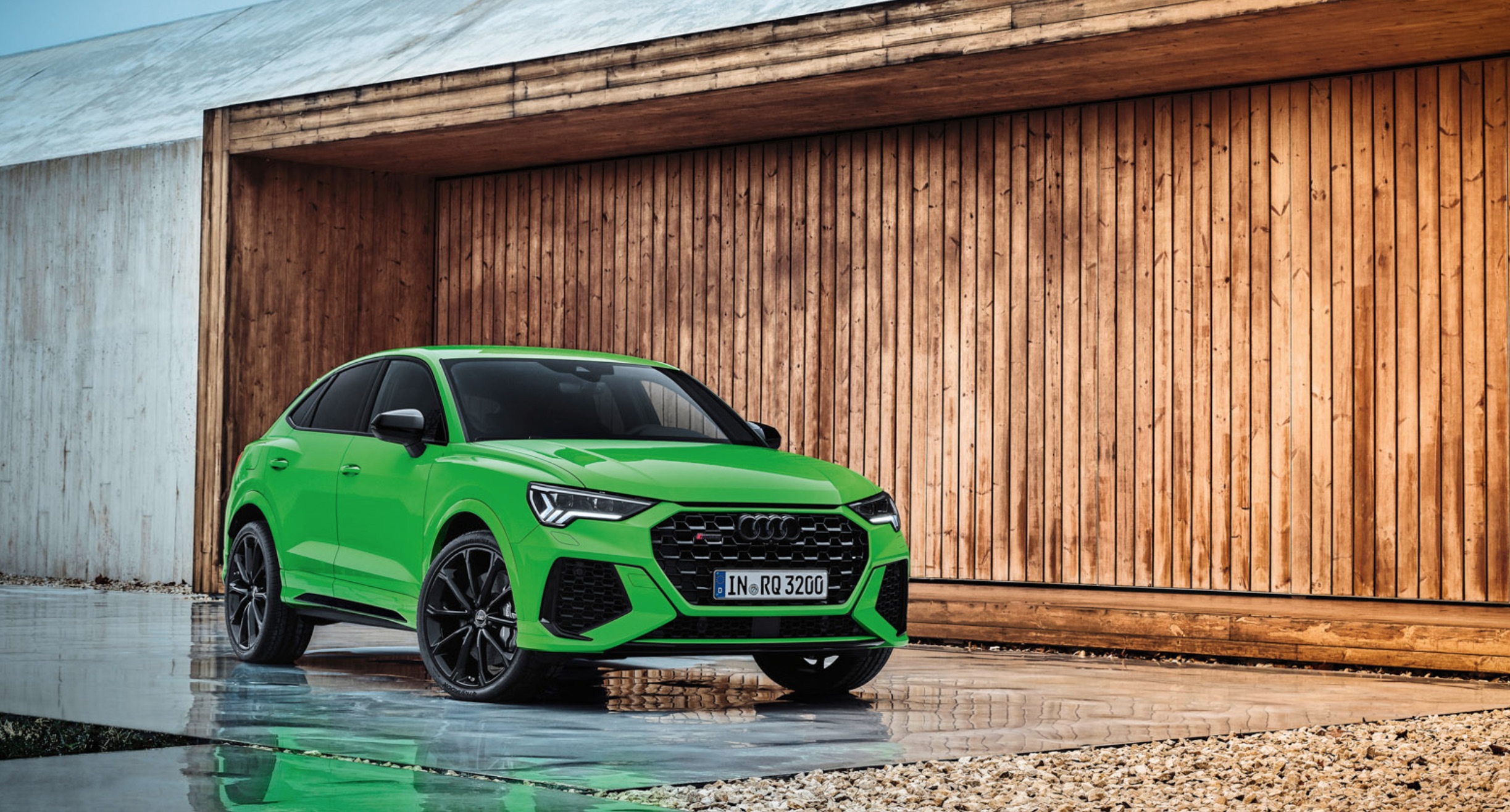Audi RS Q3 – Introduction
The new RS Q3 and its coupe-like Sportback sibling are the latest offerings in a burgeoning Audi RS portfolio that now runs to 12 models.
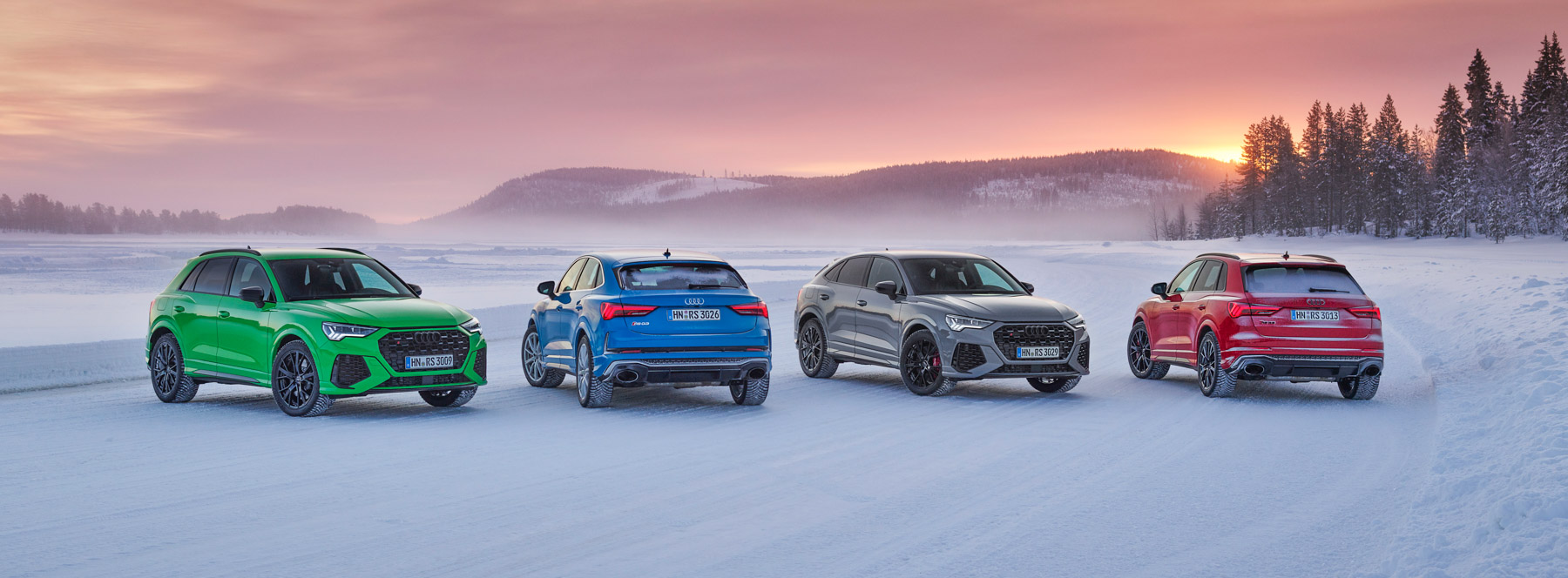
Audi RS vehicles have a strong and unique character: spontaneous maximum performance wherever and whenever desired, and effortless performance on long journeys,” began Oliver Hoffmann, Managing Director of Audi Sport. Hoffmann went on to explain that many RS drivers use their car every day for business trips and running errands and rack up a lot of kilometres. “An RS is a true Dr. Jekyll and Mister Hyde. It is important for every kilometre, no matter how it is driven, to be an experience.”
And now, the second-generation RS Q3 has arrived to run the gamut of driving experiences and tasks with a strong determination from the Audi Sport team that it should excel across this spectrum. To wear an RS badge, every high-performance Audi, even the freshly minted compact SUV duo, must complete an arduous development programme on the Nurburgring’s Nordschliefe.
“The North Loop represents the ultimate endurance test in our development and coordination work,” explained Hoffmann. “Every RS model undergoes at least 8000km of testing here. The track provides us with detailed information about the durability of our parts under extreme conditions and specifics about the suspension.”
During the development laps, more than 80 percent of the 20.8km loop is driven at wide-open throttle. According to Audi’s internal data, the magic 8,000km equates to a lifetime of driving wear and tear. “With its high demands,” concluded Hoffmann, “the North Loop is the benchmark for every sporty car. If you can survive here, you can survive on the world’s roads.”
Audi RS Q3 – Design
Second-generation Audi RS Q3 arrives in two distinct design flavours; regular SUV and a muscular Sportback variant that mimics Lamborghini’s Urus mega SUV.
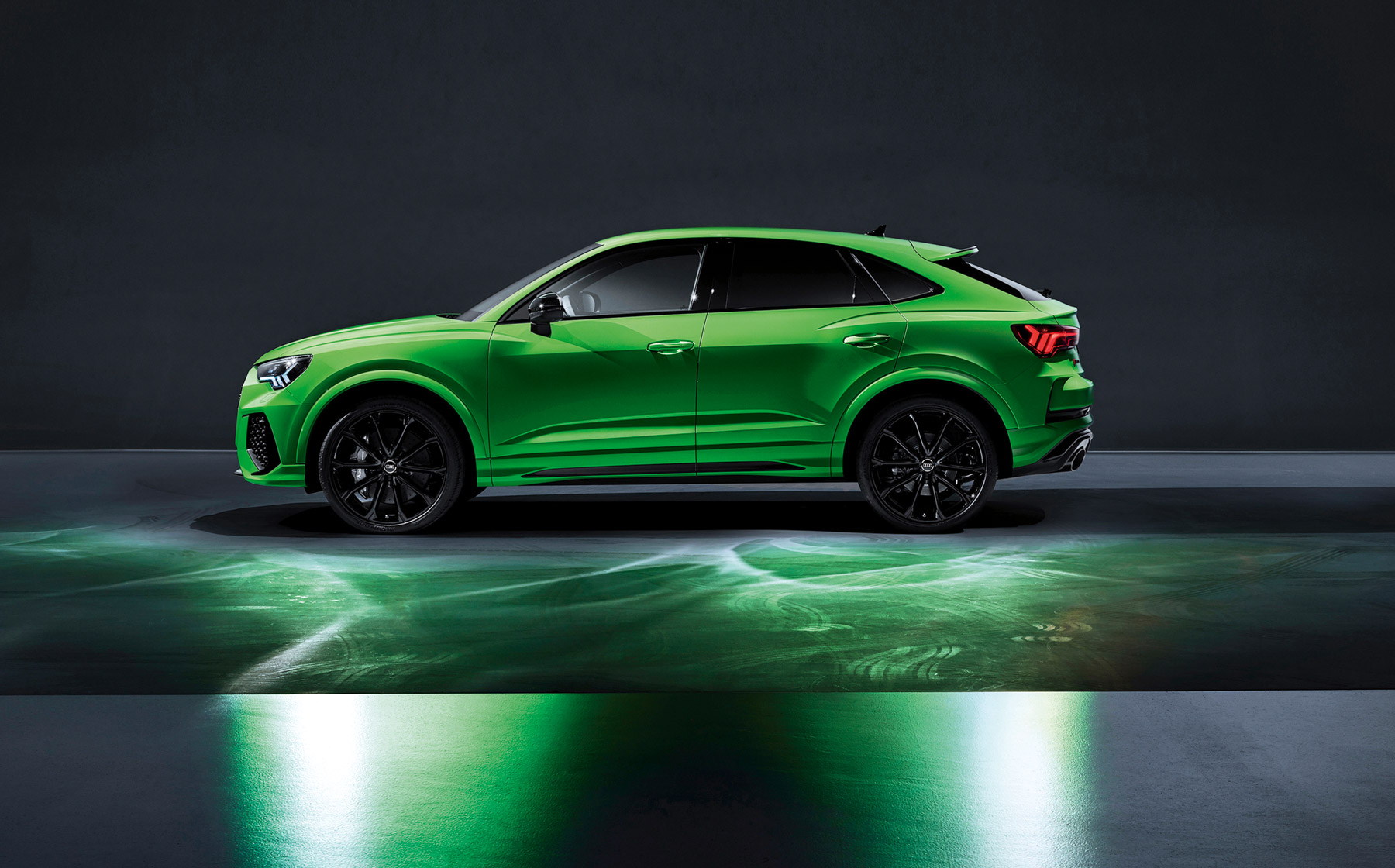
“We established a completely new segment with the first generation Audi RS Q3” began Oliver Hoffmann, Managing Director of Audi Sport. “In order to continue this success story, we also offer the RS Q3 Sportback as an SUV Coupe for customers with a particular affinity for design. In doing so, we are setting a trend and tapping new growth potential for Audi Sport GmbH.”
Particularly when finished in the vivid Kyalami green launch colour (pictured), the RS Q3 Sportback bears more than a passing resemblance to the Lamborghini Urus, its larger and vastly most expensive cousin from Italy.

Coupe-style SUVs certainly aren’t new, but they aren’t easy to get right. However, the RS Q3 Sportback nails the brief with a forward-thrusting stance rather than the big-bum-on-stilts look that afflicts so many of the genre. The roof line plunges towards the rear after peaking between the A- and B-pillars. Overall, the Sportback is 45mm lower than the mainstream RS Q3. The cascade of the roof combines with a rising shoulder line to give the Sportback its dramatic, Lamborghini- like profile. Cleverly, the shoulder line is actually lower than that of the upright version of the RS Q3, which is what alleviates the bum-big look.
The shallow rear window gives the Sportback an aggressive rear stance that is capped by a roof edge spoiler in body colour that is topped by a gloss black Gurney-flap style lip. Down below, large oval exhaust tips, from the new dual-branch system, puncture either side of the diffuser-style rear valance.
While the Sportback differs markedly from the more upright RS Q3, both models share and exhibit many strands of Audi and RS DNA. Both feature Audi’s trademark single-frame grille, with the three- dimensional honeycomb insert finished in RS gloss black. The grille is larger and extends lower than that of the mainstream Q3 models, and it is inserted directly into the RS-specific bumper with large lateral air inlets. Another RS cue exhibited by the RS Q3 models is the flat slits above the single-frame radiator grille. Matrix LED headlamps are standard on the highly specified Australian models.
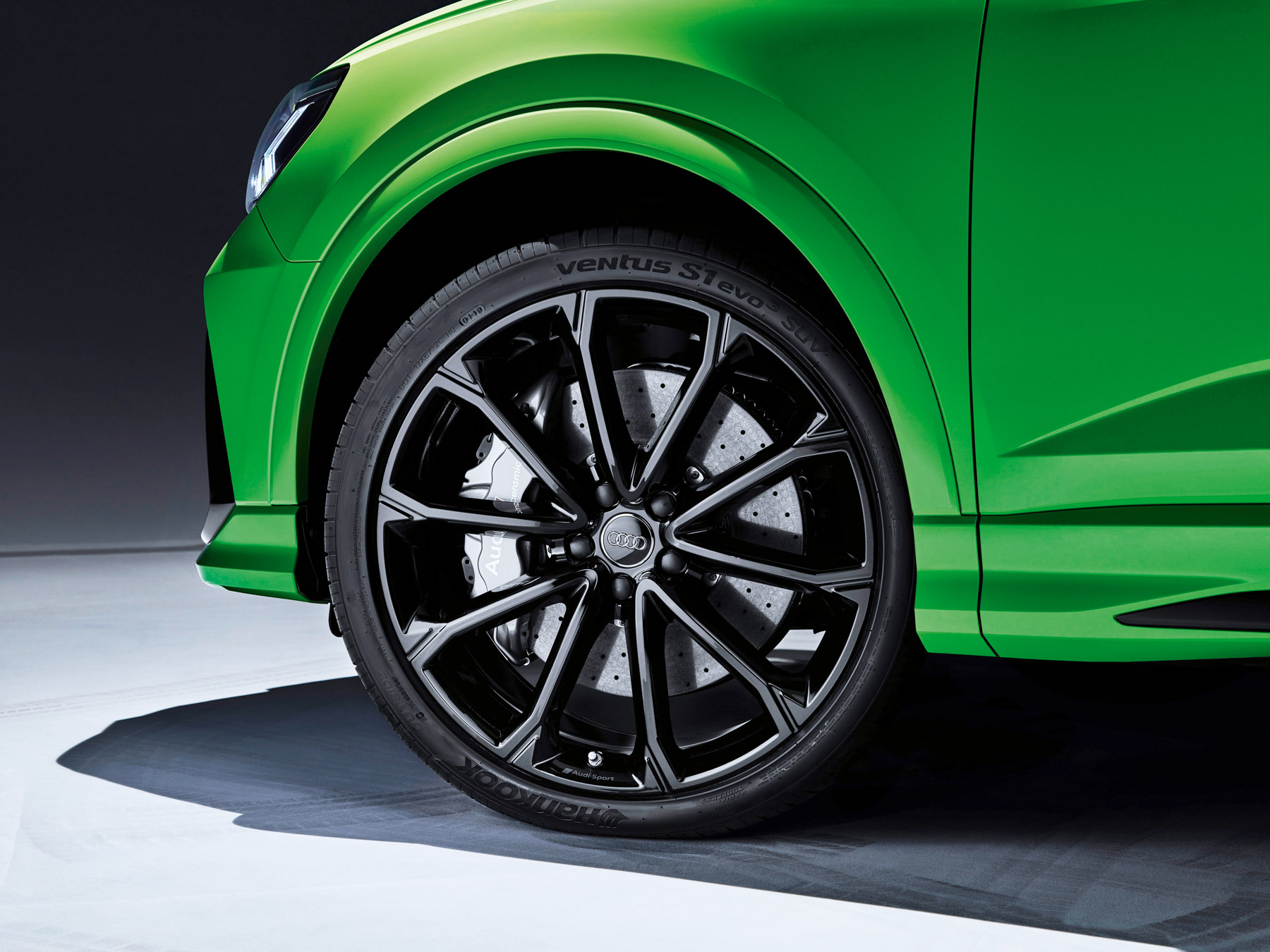
Both RS Q3 variants feature wheel arch extensions that pump out by a further 10mm compared to the flanks of the regular Q3. Both Australian-spec RS Q3 models will arrive standard with guard-filling 21-inch alloys, while 20-inch wheels are standard in many markets. Box guards have been a tradition on performance Audis since the original Quattro introduced them, along with a sporty application of all-wheel drive, way back in 1980. Given the common five-cylinder powerplant, perhaps a 40th anniversary edition RS Q3 could mark the Quattro’s big birthday?
Compared to the first-generation RS Q3, the new variants sit on a wheelbase that is 77mm longer at 2680mm in total. Overall length of 4506mm for the RS Q3, and just a millimetre longer for the coupe-like Sportback variant, ensures that the new performance SUV remains compact and wieldy both during city commutes and backroad jaunts. Both models stretch the tape measure to 1851mm in width, with the RS Q3 stands 1602mm tall, while the Sportback sneaks in at 1557mm. With the increased wheelbase, Audi claims that the new-generation RS Q3 leads the segment on rear-passenger knee room, along with front and rear shoulder room.
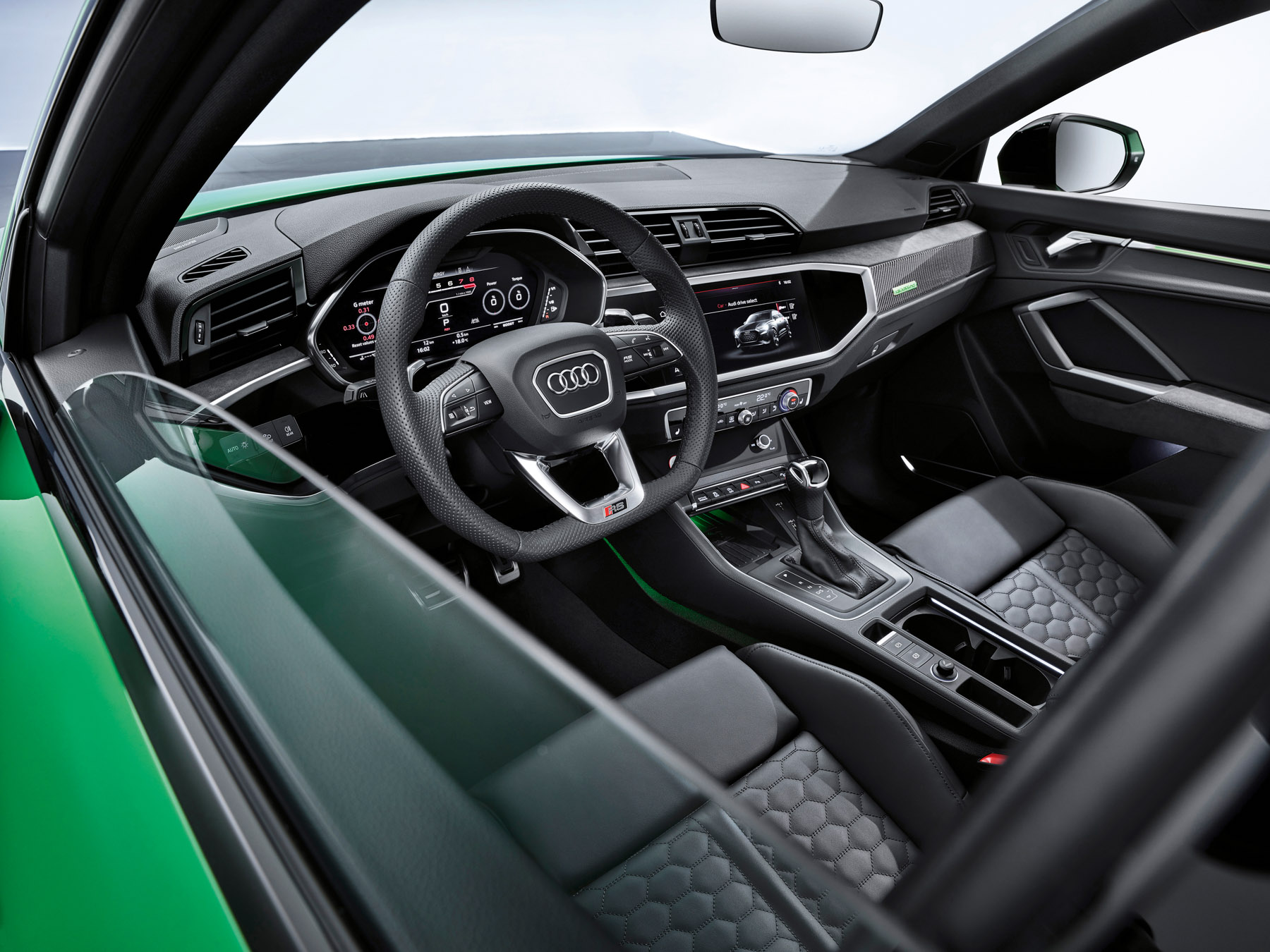
At launch, eight colours will be offered, including the RS-specific hues of Kyalami green and Nardo gray. The colours contrast with the standard gloss black styling package (exterior mirror caps, sill inserts), but this can be swapped for the optional aluminium-look package. A carbonfibre engine cover is also optional, and you can have the standard silver Audi rings and RS logos finished in black as well.
Since the arrival of the original TT more than 20 years ago, Audi has set the industry standard for interior design and execution. The new-generation RS Q3 models builds on that reputation with interiors that integrate a plethora of technological features with a classic design aesthetic.
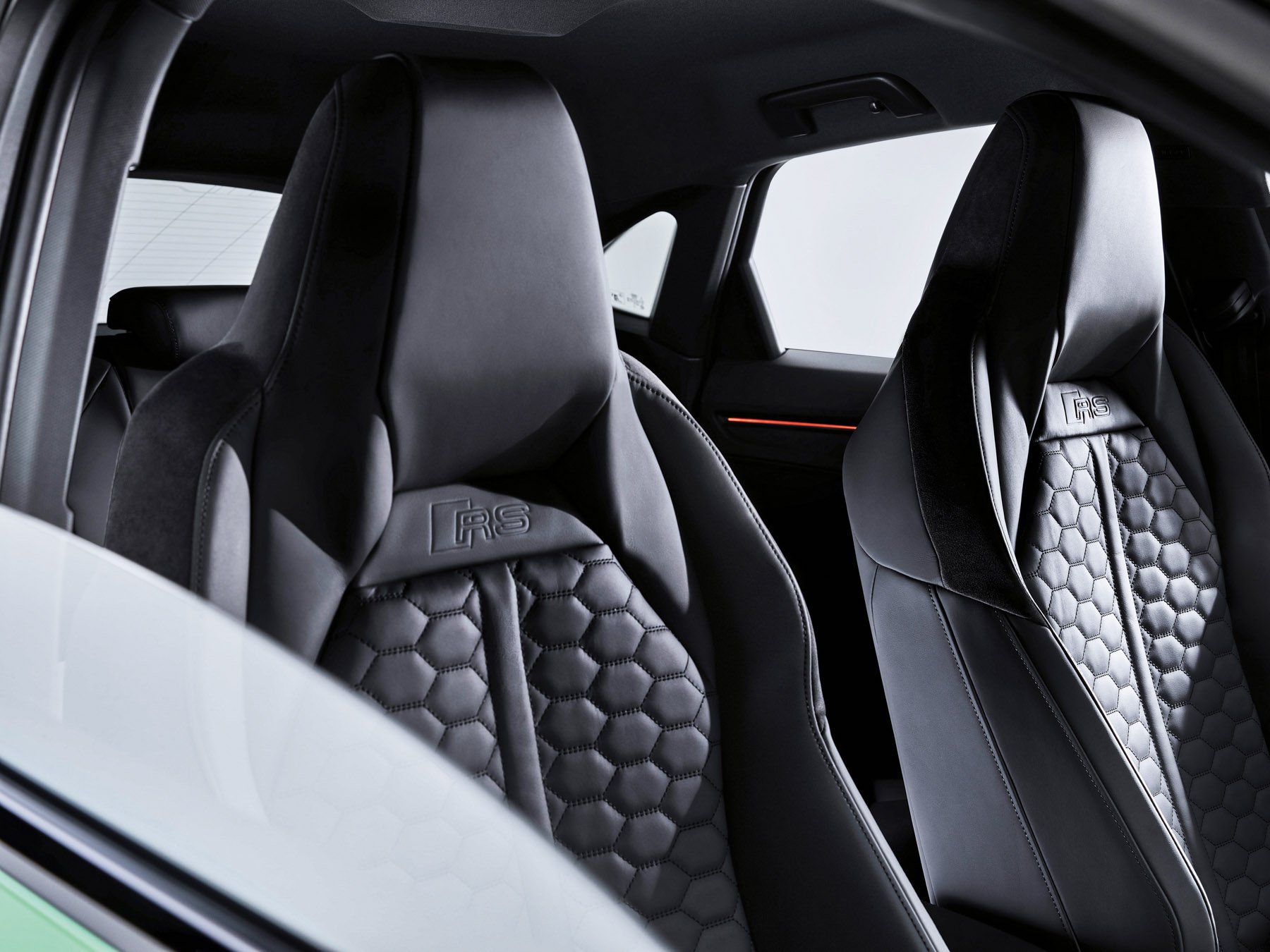
Strong horizontal lines give the impression of space and quality materials lend the RS Q3 an air of luxury that is often missing in the compact SUV segment. Unlike most other markets, Australian-spec RS Q3 models will offer the RS sports seats (finished in nappa leather and with RS embossing and honeycomb stitching) as standard equipment. The dash and door inlays are available in Aluminum Race, anthracite, piano finish, black or carbon. The brand also suggests that this is the first time the interior can be finished entirely in black. However, those after a splash of colour can choose an RS design package that adds red or blue accents with contrasting stitching on the steering wheel rim, seat belts, floor mats, and gearshift lever. The steering wheel and selector lever are finished in Alcantara in this case. With the extended RS design packages, the panels and door armrests are trimmed in red or blue Alcantara. Need even more colour? The multi-colour ambient lighting package brings a choice of 30 different colours that trace the contours of various areas of the interior.
Audi Australia is predicting that the coupe-style Sportback will be the most popular variant when deliveries start in late July. The RS Q3 starts at $89,900, while the Sportback asks $92,900.
Audi RS Q3 – Tech
In a segment dominated by four- cylinder offerings, Audi’s new RS Q3 stands apart with its warbling five-cylinder powerhouse.
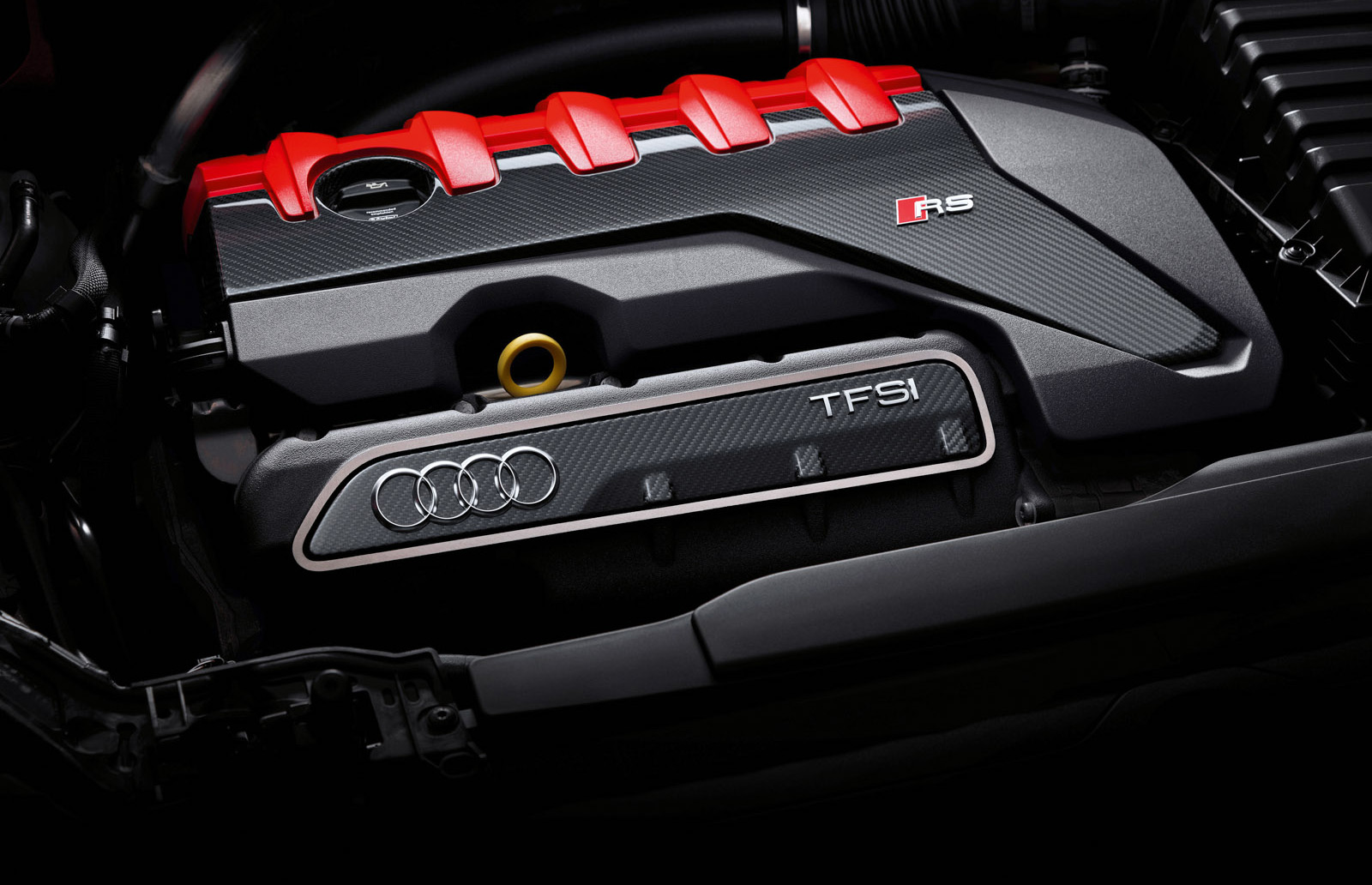
We’ve seen Audi’s 2.5-Litre Cylinder turbocharged engine many times before; it’s a bespoke Audi Sport unit developed in homage to the engine that echoed across the world rally stages in the 1980s. Initially found in the first-generation Audi RS3 and TT RS, the ‘R5’ inline-five has been refined with lighter construction (the current version uses an aluminium block rather than the cast iron of the first-generation variant), bigger turbo and Audi’s latest injection system to reach its current state found in both the new- generation RS Q3 and the RS3.
Peak power is rated at 294kW from 5850-7000rpm, while maximum torque, 480Nm, is spread out between 1950 and 5850rpm, sent through a seven-speed dual- clutch transmission. It’s worth noting the vast spread of power and torque, as the engine is making either maximum torque or maximum power from 1850rpm all the way to 7000 revs. Very few engines have such a range and fewer still provide an instant transition from maximum torque to peak power.
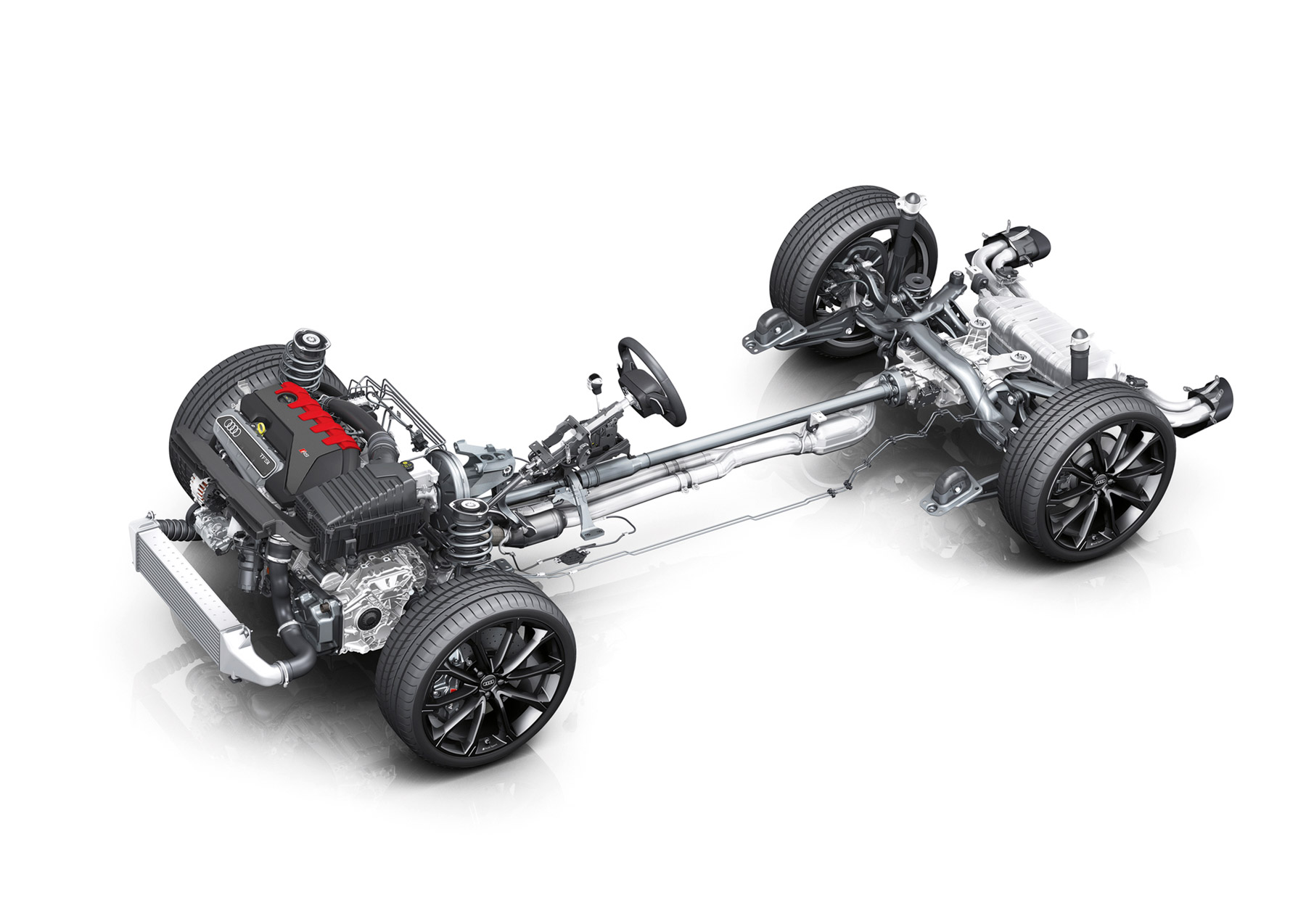
As the numbers suggest, the engine is devastatingly effective, yet it majors on engagement, and is a nine-time winner at the annual International Engine of the Year awards. The five-cylinder layout, which shares its bore and stroke with the 5.0-litre V10 previously used by Audi and Lamborghini, features a unique 1-2-4-5-3 firing order that gives the engine its distinct note. That note is further enhanced by the RS sport exhaust that is optional in most markets but will be included in the standard-equipment list when the RS Q3 and RS Q3 Sportback arrive in Australian showrooms in August.
The 2480cc turbocharged five-cylinder engine measure less than 50cm in total length, and thanks to the switch to an aluminium construction, it now weighs 26kg less than the previous version. The switch from cast iron to an aluminium crankcase contributes an incredible 18kg of the 26kg total reduction. And remember, all of that weight is taken off the front axle with obvious benefits to handling and braking performance. A further kilogram is saved thanks to the hollow-bored crankshaft and precious additional grams were found by reducing the main bearings by 6mm in diameter. Aluminium pistons, with integrated oil channels, pump inside plasma-coated bores that help minimise friction losses in order to combine power with economy. Official combined-cycle fuel consumption is 8.9L/100km for both RS Q3 variants. And this from an engine that makes just shy of 400 horsepower (394bhp or 400ps).

The 2.5-litre five-cylinder engine is transversely mounted and is fed by a turbocharger that sits on the backside of the motor. Maximum boost pressure is 1.35 bar, and intake temperatures are kept in check by an air-to-air intercooler that claims a very high 80 percent efficiency rating. The engine features a dual- injection system that can be adjusted to suit the driving conditions but that generally uses port injection for low- to-mid rpm response and direct injection for high load, high rpm situations. Both intake and exhaust valve timing is adjustable via the Audi valvelift system.
The new-generation RS Q3 delivers its power to the minimise friction losses in order to combine power with economy. Official combined-cycle fuel consumption is 8.9L/100km for both RS Q3 variants. And this from an engine that makes just shy of 400 horsepower (394bhp or 400ps).
The 2.5-litre five-cylinder engine is transversely mounted and is fed by a turbocharger that sits on the backside of the motor. Maximum boost pressure is 1.35 bar, and intake temperatures are kept in check by an air-to-air intercooler that claims a very high 80 percent efficiency rating. The engine features a dual- injection system that can be adjusted to suit the driving conditions but that generally uses port injection for low- to-mid rpm response and direct injection for high load, high rpm situations. Both intake and exhaust valve timing is adjustable via the Audi valvelift system.
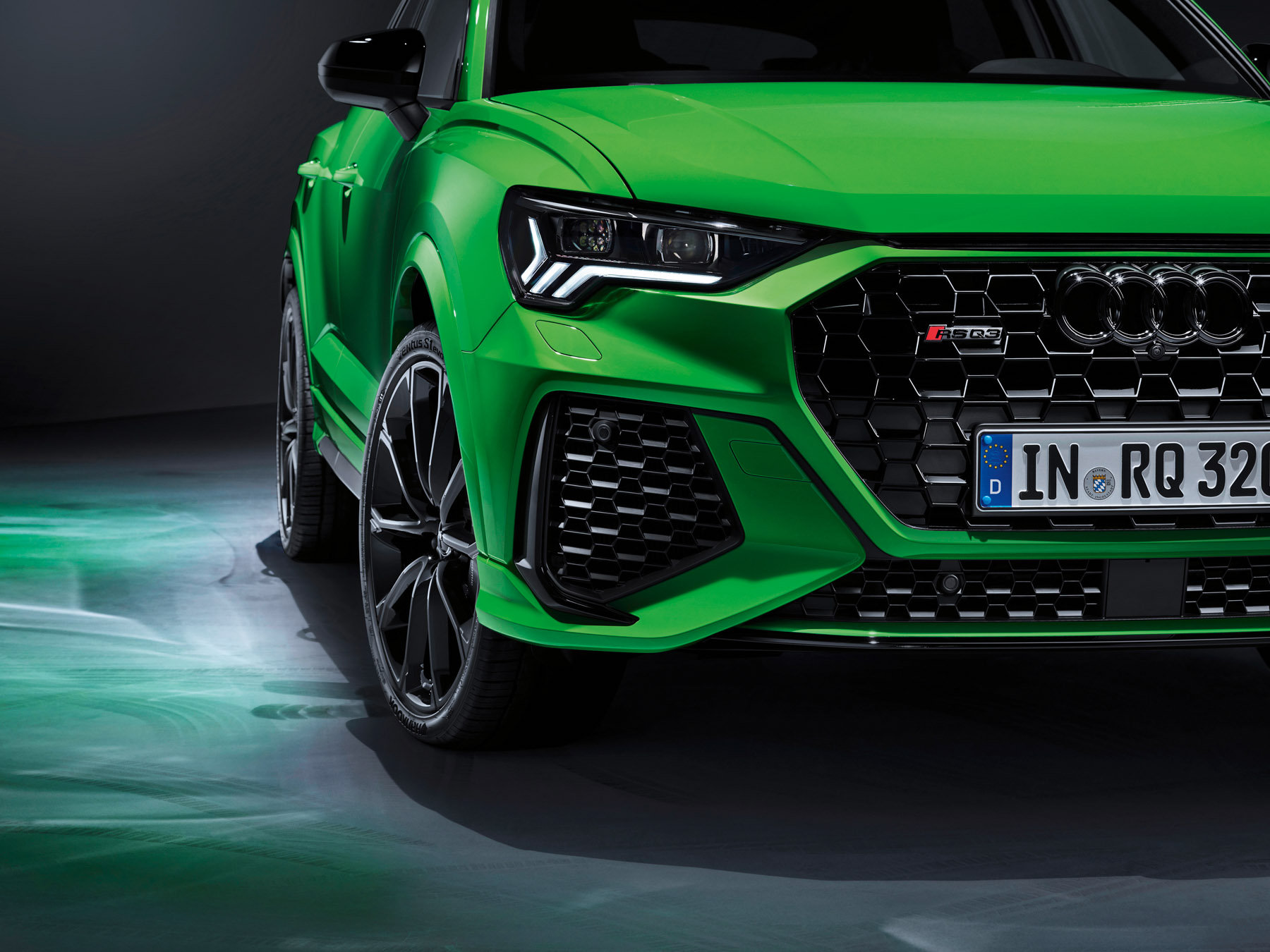
The new-generation RS Q3 delivers its power to the to the higher limits of the RS variants of the Q3 range. Compared to the rest of the Q3 range, the RS models sit 10mm lower on their suspension. The front axle is suspended by a MacPherson strut set up aided by lower wishbones, while the rear uses a four-link design. Australian-spec RS Q3 models feature the RS sport suspension with Dynamic Chassis Control (DCC) adaptive dampers.
Audi Drive Select is present with its usual modes – comfort, auto, dynamic, efficiency and individual – but also brings two new RS modes known as RS1 and RS2. The RS modes can be set up via the MMI display and quickly accessed through the RS Mode button on the steering wheel. Audi Drive Select and the RS modes influence the response of the engine, gearbox, quattro drive, suspension and steering, in addition to the aural characteristics of the RS Q3.
While 20-inch alloys are the norm in most other markets, the highly-specced Australian models will arrive standard with 21-inch wheels. Up front, they hide cross-drilled 375mm rotors that are squeezed by six-piston calipers. Rear braking is by 310mm rotors and single-piston calipers. Highlighting the generous specification of Australian-delivered cars, the calipers are finished in red as standard; this is a cost option in many markets. Optional 380mm carbon-ceramic front calipers are also available, and these are again teamed with the 310mm cast-iron rear rotors. The pair of carbon-ceramic rotors saves 10kg over the cast-iron set up.
So while the RS Q3 models will be rightly defined by the classic sounds and furious power of their five- cylinder engines, the depth of engineering covers the entire car from bumper to bumper.
Audi RS Q3 – Drive
It sounds like half an R8 V10, looks like a miniature Lamborghini Urus, goes like a sports car and handles like a hot hatch. There is plenty to like about the second-generation Audi RS Q3.
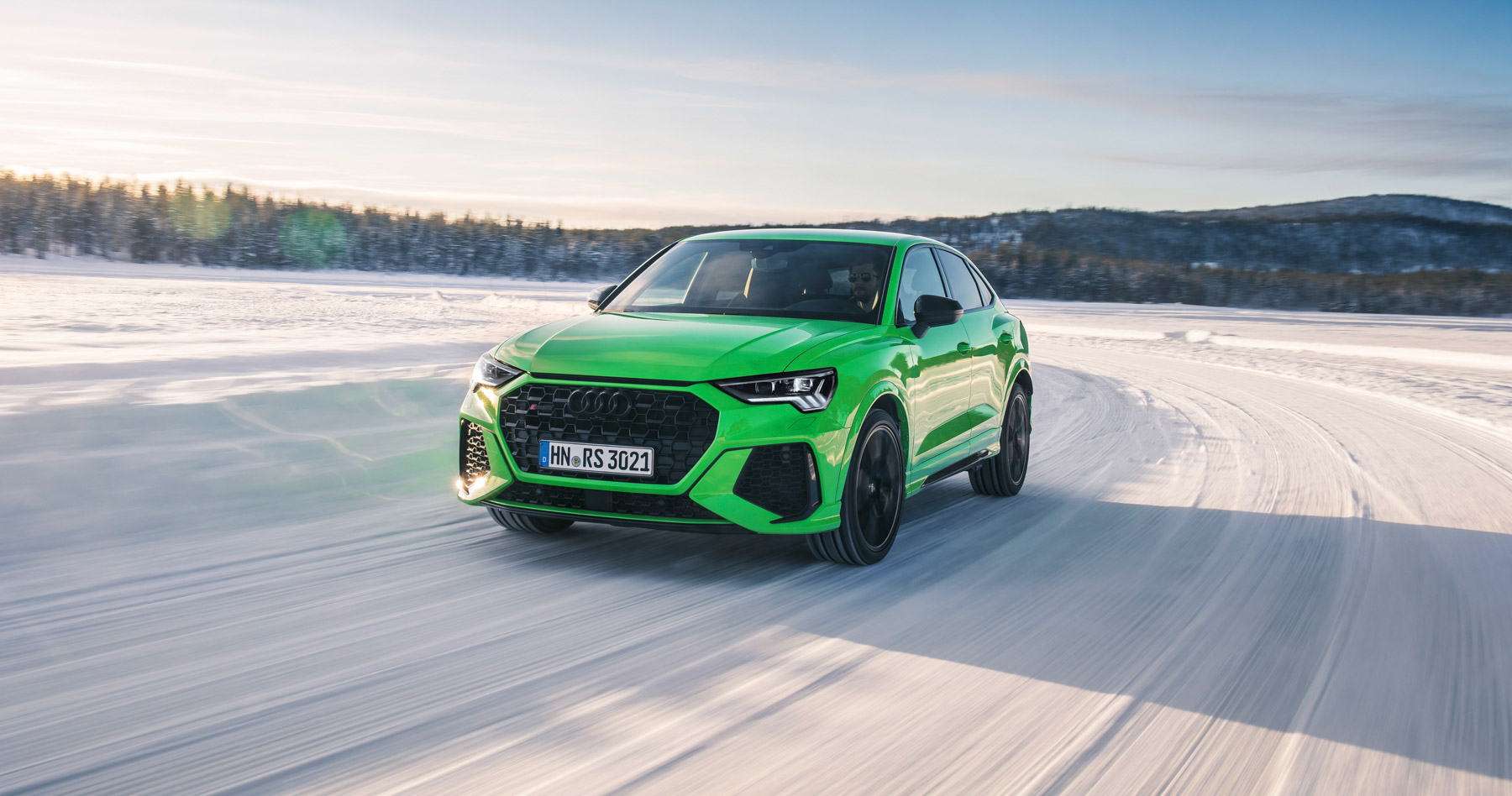
Dominated by a charismatic five-cylinder the engine note somewhat, but it’s been well augmented powertrain that channels Audi’s back catalogue of performance models such as the Quattro and original RS2, the RS Q3’s combination of powertrain, dynamic focus and compact footprint make for an interesting package.
As we’ve discovered on the previous pages, the 2.5-litre turbocharged five-cylinder engine is both a powerhouse and technological masterpiece. The spread of power and torque is unique among its peers as from 1950rpm to 7000rpm it’s either making maximum torque or peak power. The former maxxes with 480Nm from 1950-5850rpm, from where the tacho needle continues its charge around the dial, handing the baton to the 294kW peak power. Peak power is generated all the way to 7000rpm.
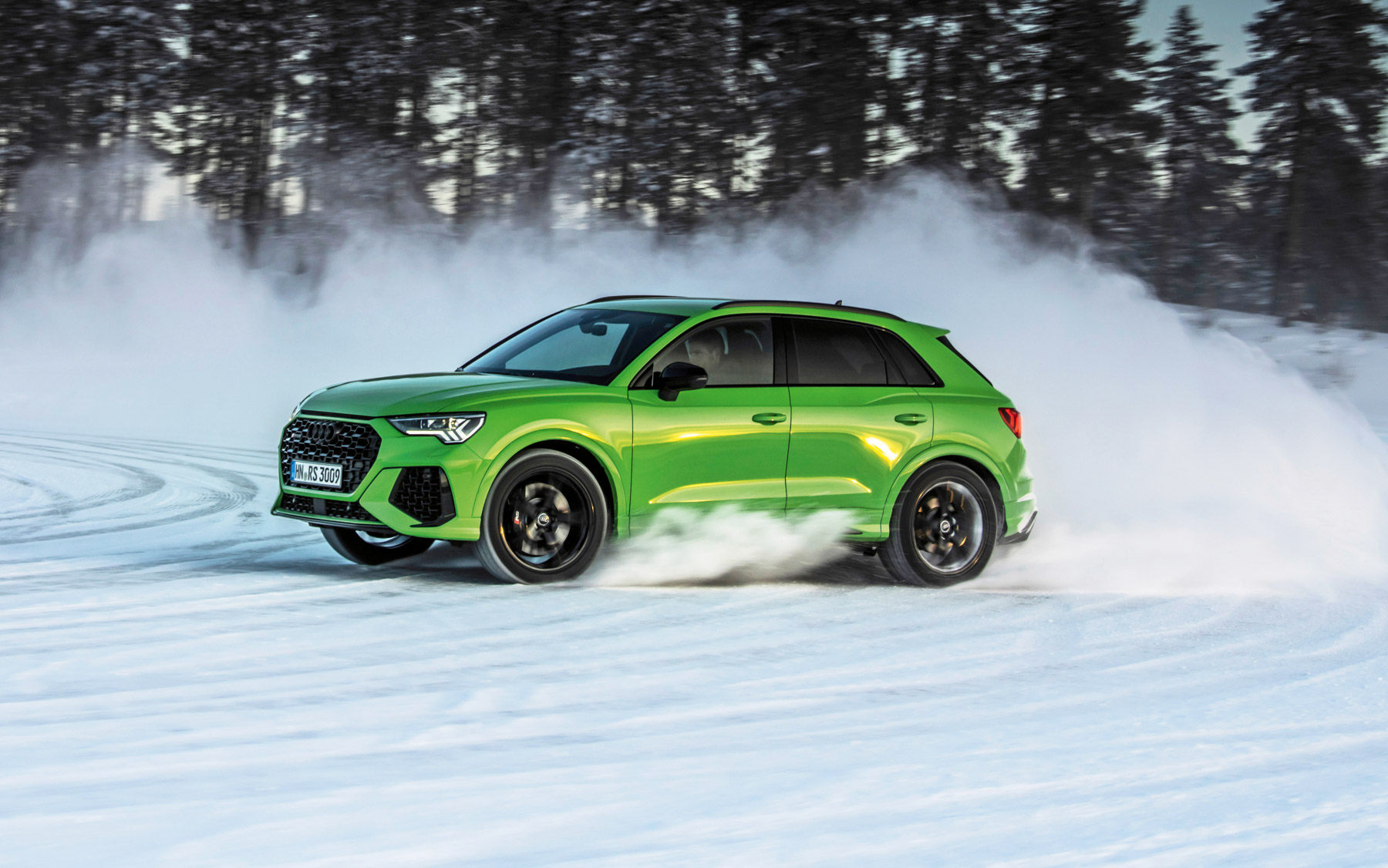
The gearbox itself is a rapid-fire companion to the engine, keeping the motor on the boil at all times and providing the driver with another source of entertainment. And, perhaps more importantly, the gearbox also slips into the background when you’re using the RS Q3 for more everyday activities. And that’s an important point when discussing the RS Q3. Sure, we all spend hours contemplating a dream garage of multiple vehicles, but the reality of a single-car family means that your choice has to tick as many boxes as possible, hence the burgeoning popularity of the performance SUV genre.
The 26kg weight-saving from switching to an aluminium construction for the engine is noted both on the spec sheet and from the driver’s seat. Coupled to a handful of other weight savings, the RS Q3 tips the scales at 1715kg or a neat 1700kg for the Sportback variant. That weight is split 55 percent front and 45 percent rear.
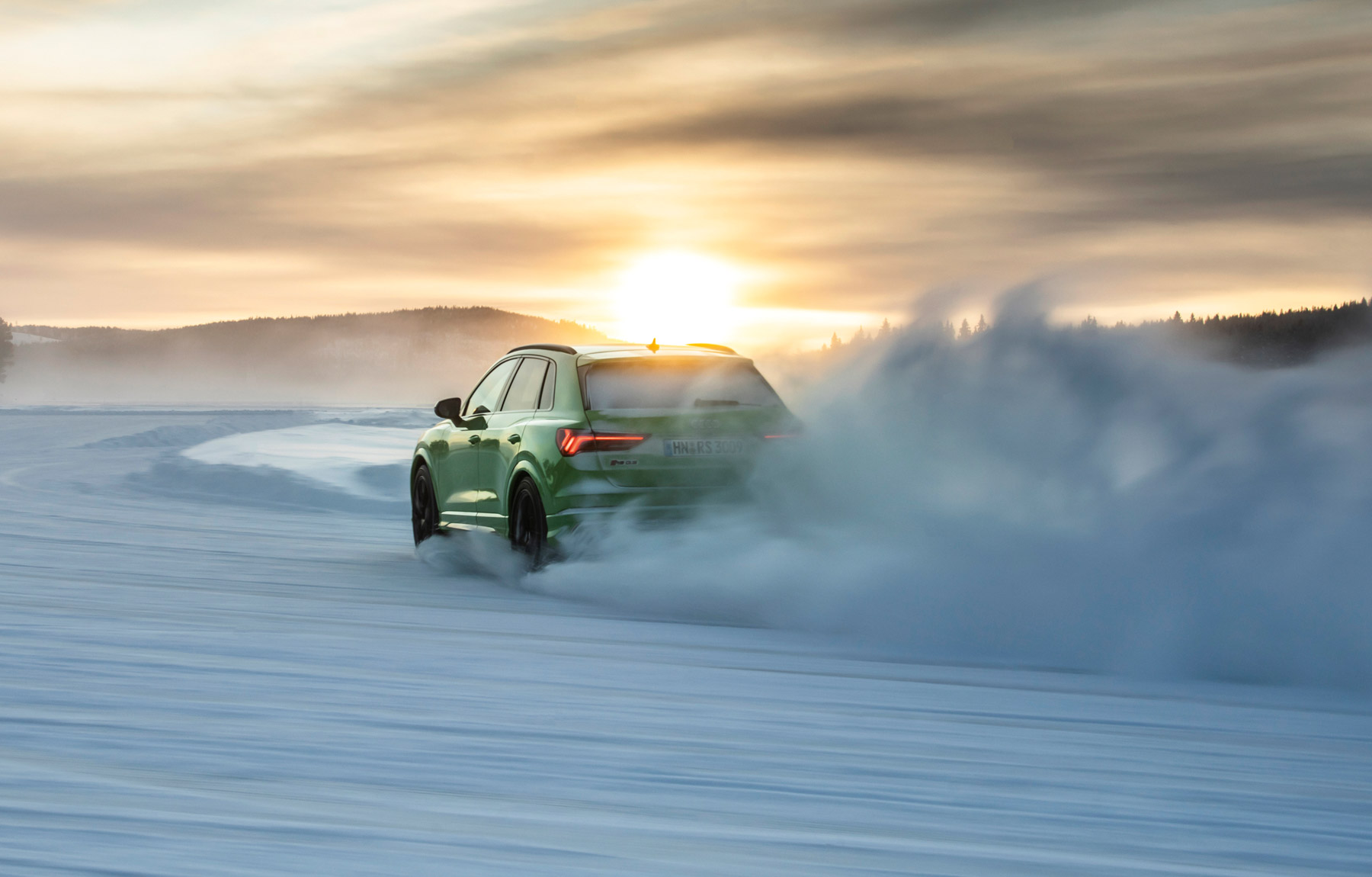
Audi claims that the RS Q3, with the aid or launch control and that fast-shifting seven-speed dual-clutch S tronic gearbox, will accelerate to 100km/h in just 4.5 seconds. Having now sampled the RS Q3 Sportback, two things strike us about that number: firstly, that’s ridiculous and more than a match for many genuine sports cars, secondly, it actually feels quicker. In our experience of performance-oriented Audis over the last five or so years, the claimed acceleration times have nearly always been conservative, in some cases by half a second. Top speed is limited to 250km/h, though this can be optionally raised to 280.
Away from the straight line, the steering is true and transparent in its response and feedback. The Haldex AWD system is arguably the best that we’ve ever sampled, and the RS Q3 genuinely feels like a tall hot hatch rather than a slow-witted SUV. Really lean on the chassis while applying more throttle through an opening-radius corner and you can feel torque transition to the rear and the RS Q3 squat hard over the outside rear wheel. Grip and traction is almost total, but that isn’t to suggest that the RS Q3 is inert; the chassis is still adjustable and gives you options.
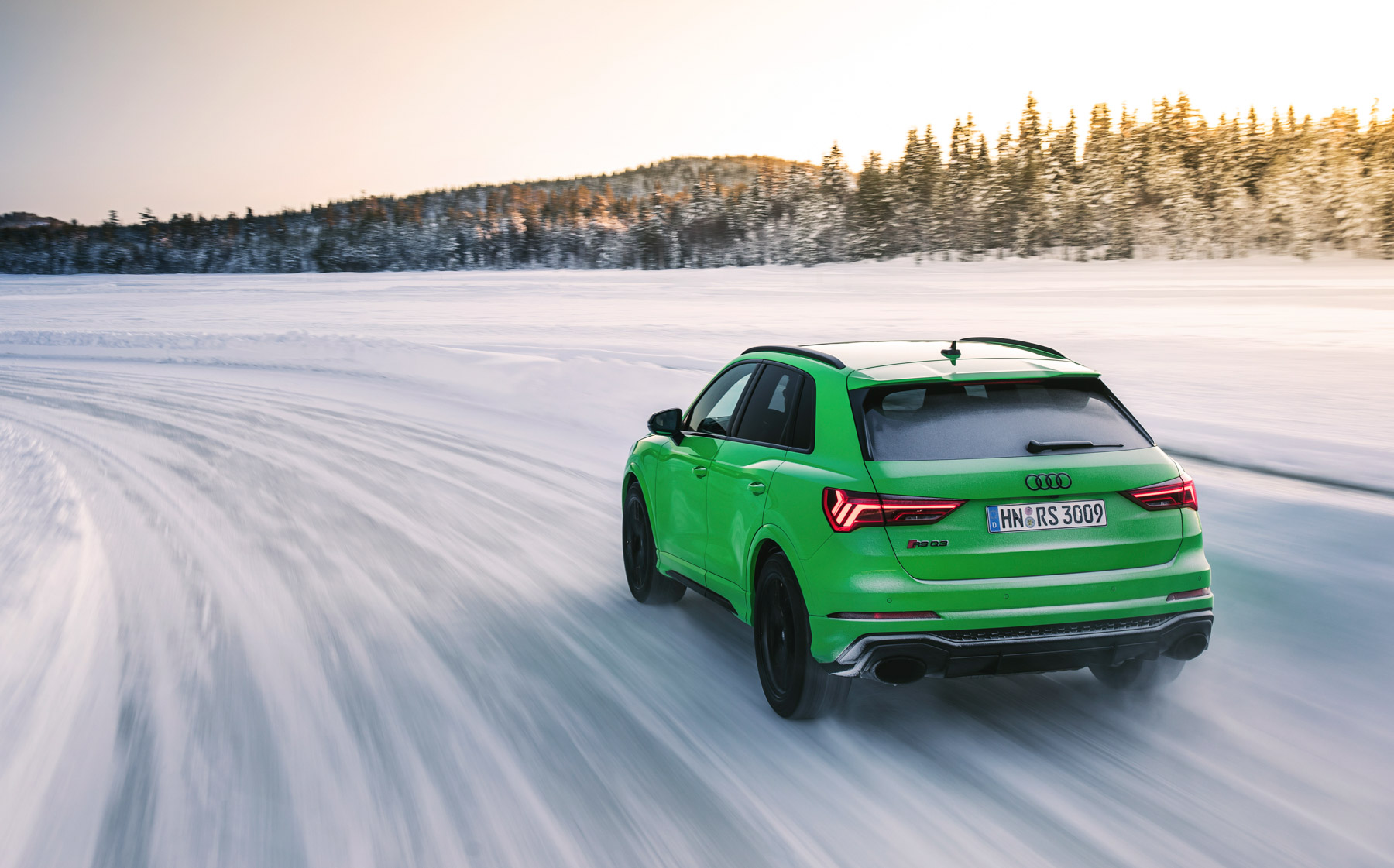
Dial up the aggression of the RS Q3 via the two configurable RS drive modes and it takes another step forward. The transmission is happy to smash through gears, helping you to build speed to the point that allows you to really load up the chassis, and find grip where you’d expect it to skate wide.
Push harder still and a nose-led handling balance does reveal itself, but by this stage the engine’s hissing, whistling and bassy warbles encourage you to almost overdrive the RS Q3, pretending to be Walter Röhrl driving the wheels off a period Audi Quattro rally car. Play with the car’s momentum and it’ll unsettle at the rear, but with faith it’ll come back to you with a pre- emptive prod of the throttle.
Far from giving up all of its secrets within a few short kilometres, the new-generation RS Q3 and its sharp- suited Sportback brother delivers a driving experience that goes beyond the usual suspects of the genre. At $89,900 for the RS Q3 and $92,900 for the Sportback variant, the new Audi offers plenty of food for thought within the performance SUV segment but it also sits out on its own. It’s the most powerful, fastest and focused of the genuinely compact SUVs on the market. Meanwhile, it’s also more compact than the likes of Porsche’s Macan, perhaps the only small-to-medium SUV that offers similar focus. Even though this is the second-generation RS Q3, it feels like an original.
